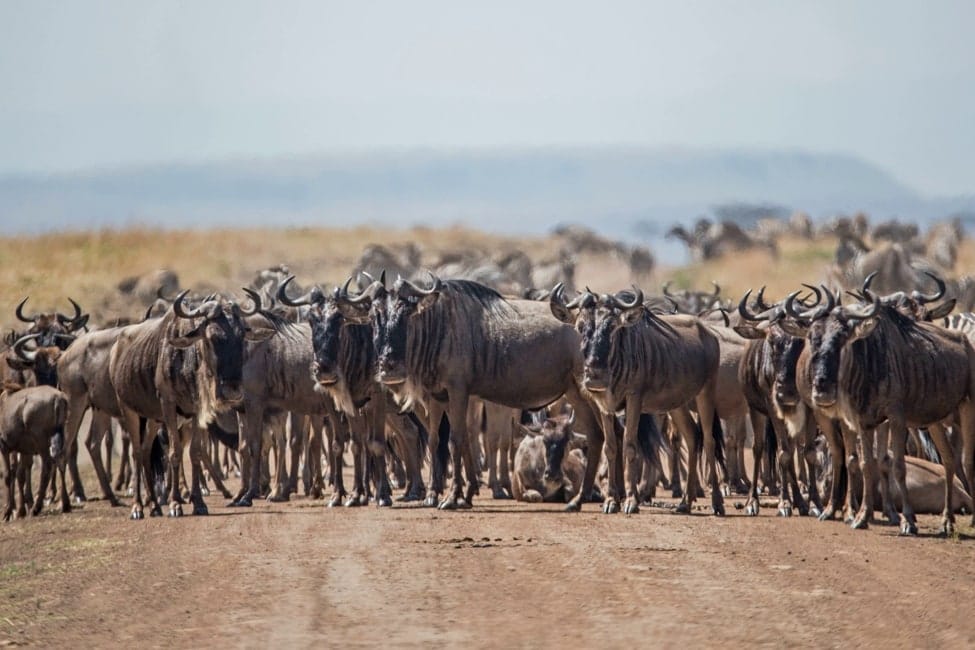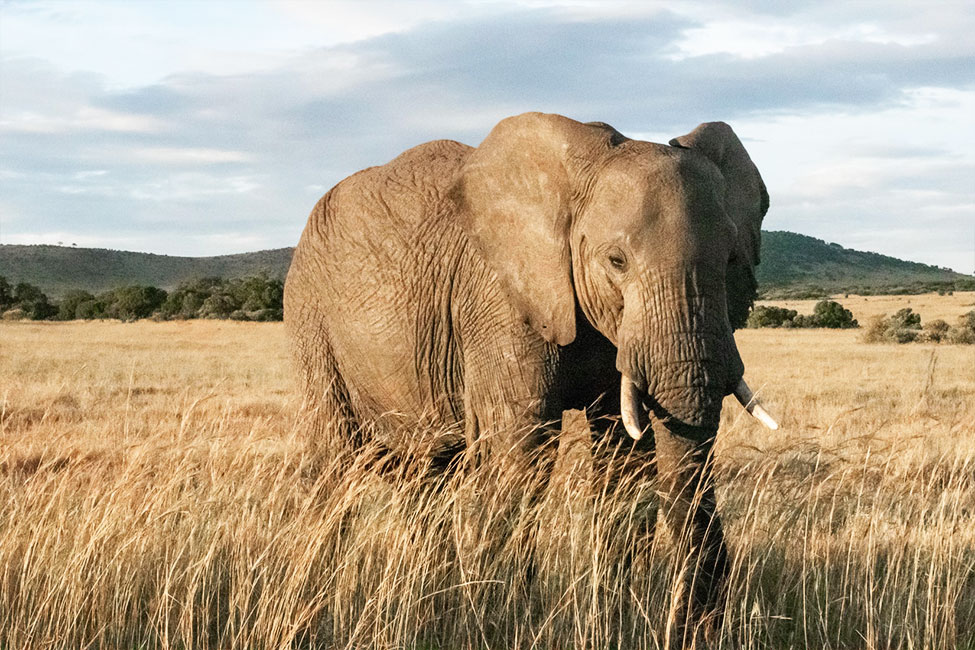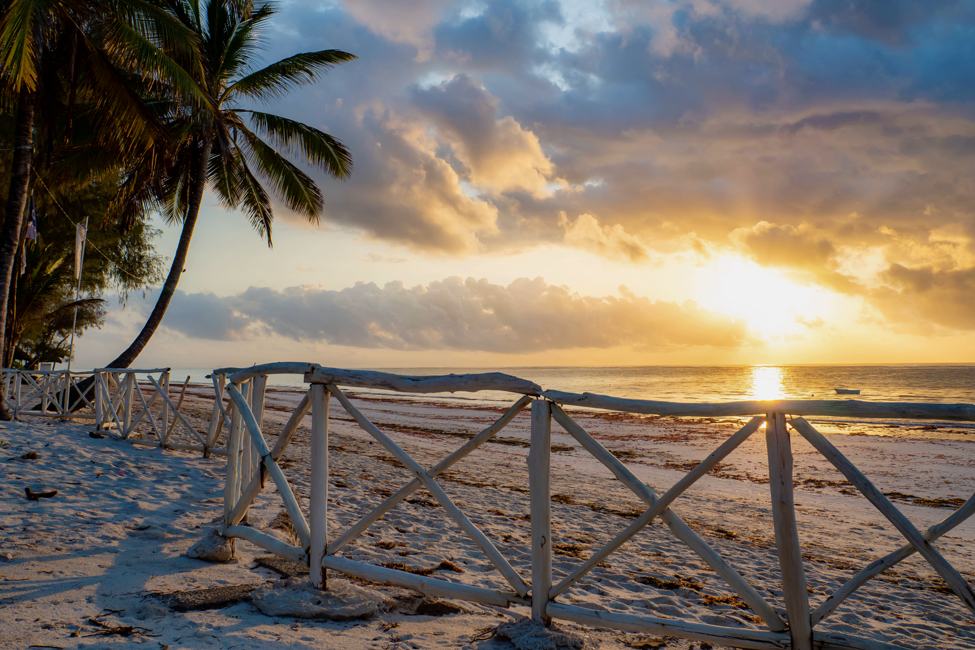Why Masai Mara should be on your bucket list
Masai Mara National Reserve is Kenya’s most famous wildlife area, and for good reason. Covering nearly 600 square miles, it protects exceptional numbers of wildlife, including the Big Five, wildebeest, zebras, giraffes, and a wide variety of other antelopes and large grazers. You’re guaranteed to see fascinating wildlife while visiting.
Lying on Kenya’s border with Tanzania, the Masai Mara—also known as Maasai Mara or the Mara—is part of the same ecosystem that includes Serengeti National Park. The reserve was designated as a protected area in 1961, and it reached its current size in 1984.
The landscape is truly breathtaking, dotted by acacia trees and gigantic elephants and giraffes that can be seen from great distances. In fact, that landscape is how it got the “Mara” part of its name. “Mara” comes from the Maasai language and means “spotted”—describing the appearance of the savanna. The “Masai” part of the name honors the Maasai people. These pastoralists live in Kenya and Tanzania and have a unique culture that revolves around cattle.
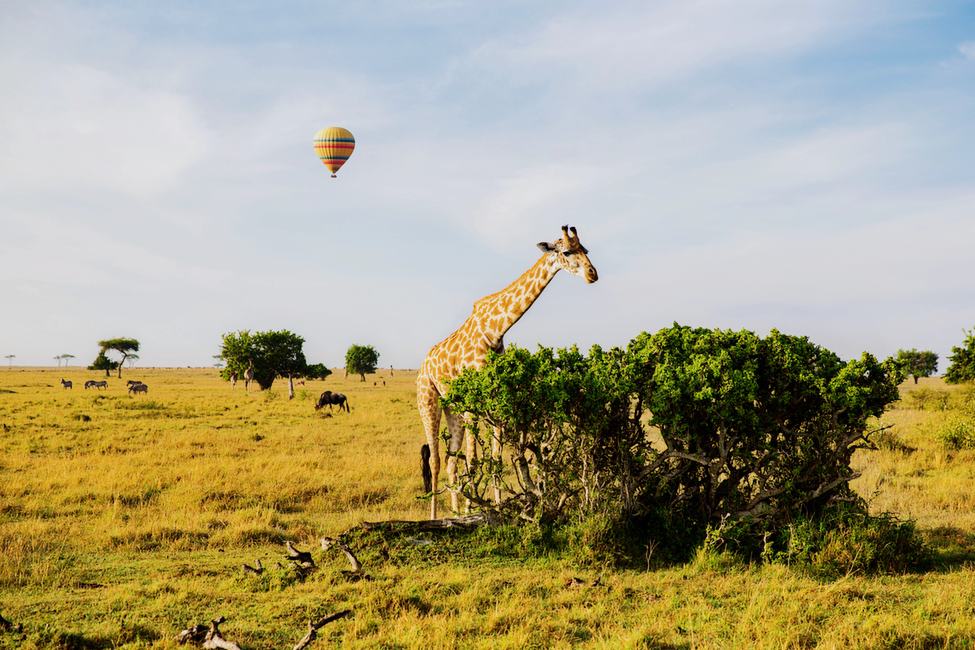
Masai giraffes, wildebeest, and zebras are among the iconic safari animals you’re likely to see in the Masai Mara—whether you’re on foot, in a 4×4, or looking down from a hot air balloon.
A Hub of Migration
The most famous attraction of the Masai Mara is the Great Migration—the largest annual migration of land mammals on the planet. Millions of wildebeest, zebras, and Thompson’s gazelles carpet the plains in search of fresh grass to eat. The drama of the migration reaches its height at the Mara River, where crocodiles lie in wait as the animals cross the roaring waters. But gentler moments of mothers nursing newborns and young animals learning to play are also plentiful.
Watching these masses of moving animals from a hot air balloon is the experience of a lifetime. But there’s also so much more to see and do in the Masai Mara.
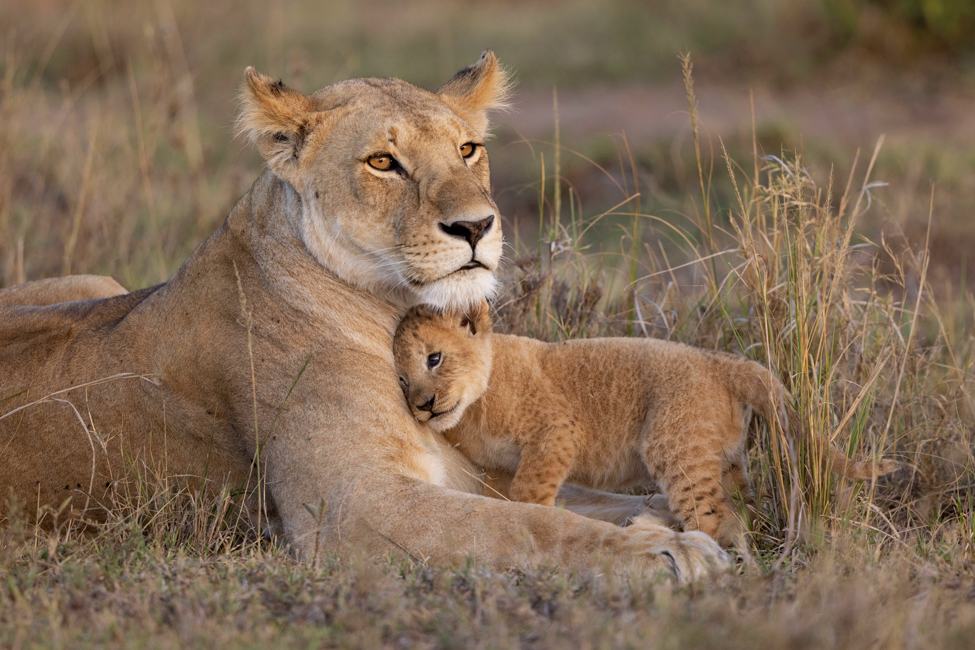
A lion cub cuddles with its mother in the Masai Mara, Kenya.
Wildlife in the Masai Mara
While wildebeest and zebras are most plentiful during the Great Migration, smaller numbers are present year-round. Other residents of the park include elephants, black rhinos, Cape buffalos, elands, hartebeests, topis, and big cats like lions, cheetahs, and leopards.
Even when wildebeest aren’t crossing, the Mara River—along with the Talek River and Sand rivers, which also cross the park—offers plenty of interest. They are home to hippos and crocodiles and attract land animals looking for water or simply a refreshing splash.
Then there are the Masai giraffes! Masai giraffes are one of three types of giraffe found in Kenya. (The other two are reticulated and Rothschild giraffes.) You can identify Masai giraffes from the others because their spots do not have smooth edges. Their rough edges and butterfly shapes give the impression of an animal covered in brown fingerpaint by a nursery school class.
While the bigger animals are impressive, don’t forget to look out for smaller critters like some of the Little 5 safari animals and bat-eared foxes, dwarf mongooses, dik-dik antelopes, and pangolins.
More than 470 species of birds, more than 50 of which are raptors, grace the reserve. Look for African crowned cranes, lilac-breasted rollers, ostriches, and Meyer’s parrots. Multiple species of vultures, eagles, bee-eaters, hornbills, ibises, and bustards also have their niche in the Masai Mara.
Explore Kenya on These Safaris
Mara Triangle
The Mara Triangle is an area of the park that lies west of the Mara River. Directly adjacent to the Serengeti, it makes up about one third of the reserve. Because it is harder to access and has only two lodges, it has fewer visitors than the rest of the park. This makes it ideal for safari-goers who want a more secluded experience, particularly in the busy season of the Great Migration.
The Mara Conservancy is the private, non-profit organization that manages the Mara Triangle on behalf of the local government. You can donate to the Mara Conservancy to support its work.
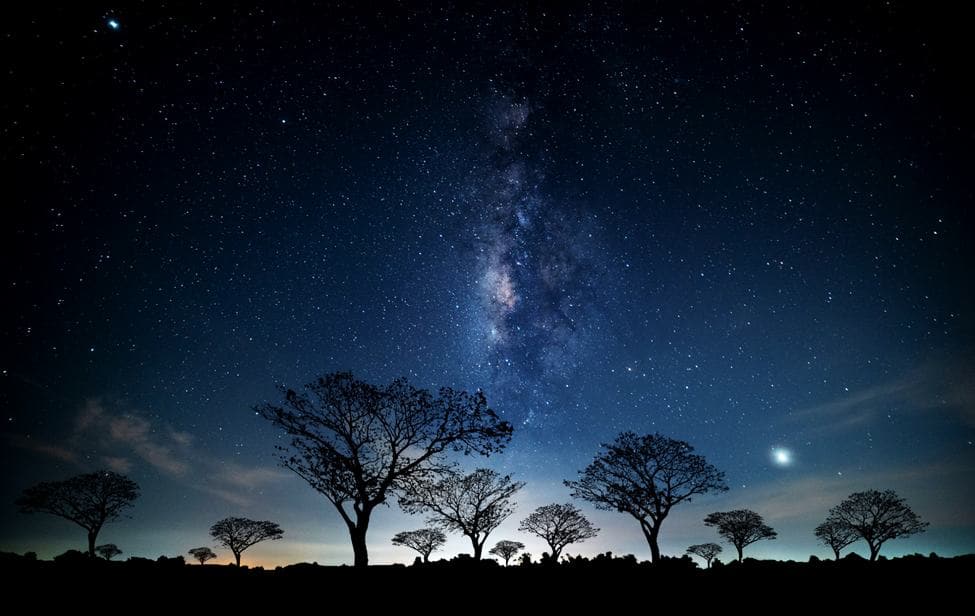
Staying at a private conservancy opens possibilities for nighttime game drives in the Masai Mara.
Private Conservancies in the Mara
Masai Mara National Reserve is surrounded by several private conservancies owned by Maasai communities, including the 34,000-acre Mara North Conservancy. Animals move freely between the reserve and conservancies, giving you a similar experience on daytime game drives. But there are differences. On private conservancies, you can enjoy activities that aren’t permitted on the public reserve. Depending on the conservancy, these may include wilderness walks, nighttime game drives, and even horseback safaris.
Staying at a conservancy also supports the local Maasai community, who own the land and receive income from environmental tourism. Many of the guides and trackers here are Maasai who grew up in the area, developing an immense knowledge of local wildlife. On walking safaris, they can show you big game, but also give you a closer look at plants, birds, insects, and small mammals that easily hide in the grass.
Take the opportunity to learn from your guide about Maasai culture. You can also arrange a visit to a local Maasai village.
These conservancies are vibrant examples of the benefits that conservation can have for local communities.
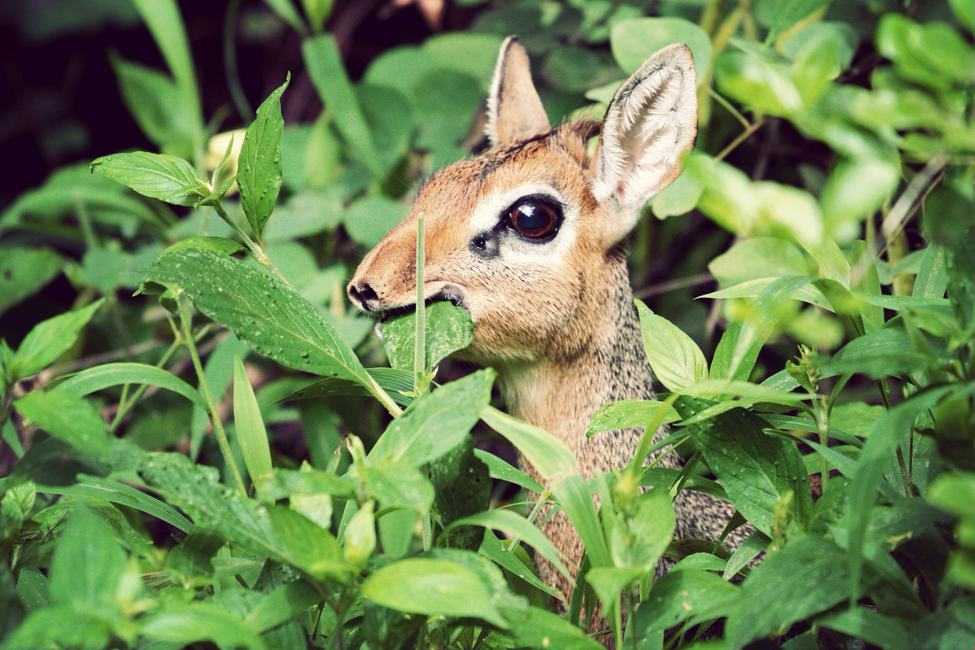
About 12–15 inches tall at shoulder height, the tiny dik-dik antelopes of the Masai Mara aren’t much bigger than a housecat.
Visiting the Masai Mara
The Masai Mara is fairly easy to get to. The eastern entrance to the park is just 140 miles from Nairobi and reachable by road. Several airstrips serve the park and are conveniently located near lodges—but far enough away that you will not hear planes taking off during your safari. You can take scheduled flights into an out of the park or charter your flights.
Then there is the question of when to visit the Masai Mara. The most popular time to visit is from July through October, when the Great Migration floods the acacia-dotted plains with wildlife. But it’s also the time of year when lodge rates are highest.
You can save money and still enjoy stellar game viewing by visiting during other times of the year. You’ll see fewer wildebeests and zebras, but a lot of almost everything else. Weather is pleasant through most of the year, usually dry with lots of sunshine and clear night skies.
But there are two rainy seasons each year. One runs for six to eight weeks in April and May, and the second for about four weeks in November and December. If you’re looking to save money or avoid other travelers, these green seasons are a great time to visit. Lodges typically charge lower fees than they do during the dry seasons, and visitors to the park are few and far between.
To explore your options for crossing the Masai Mara from your bucket list, contact Ujuzi Travel today.
Great Wildebeest Migration Map
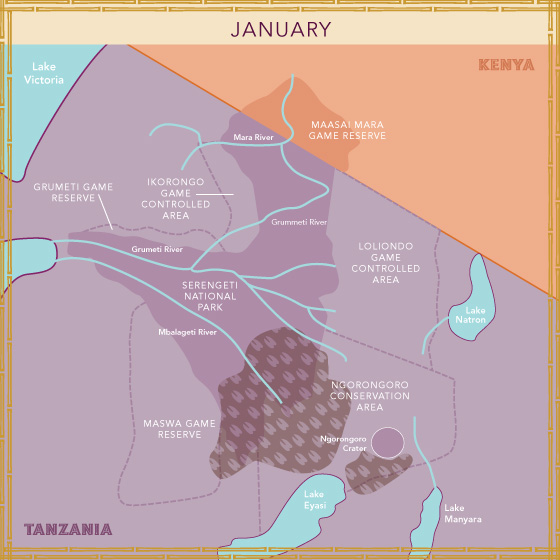
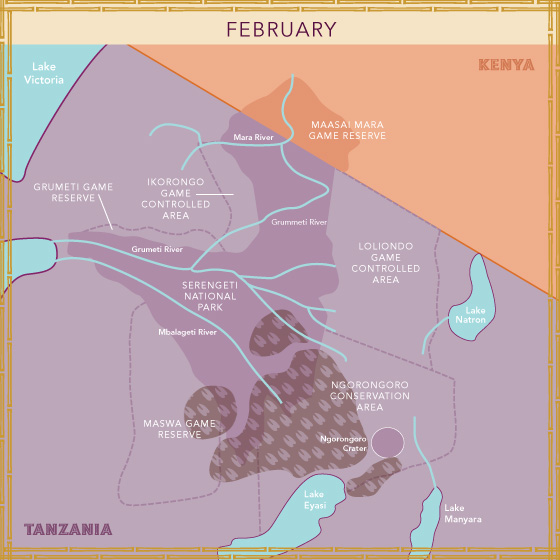
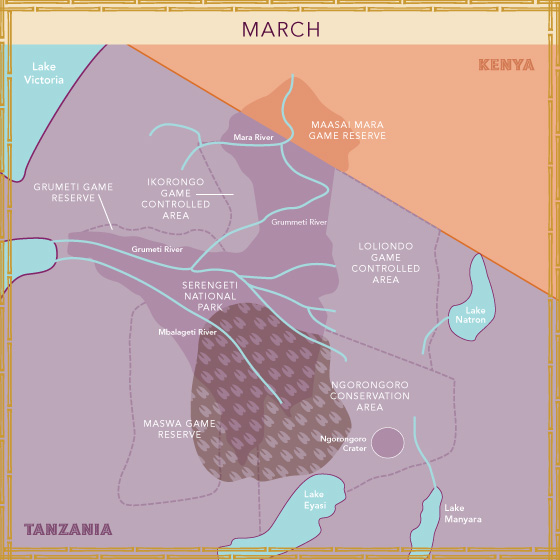
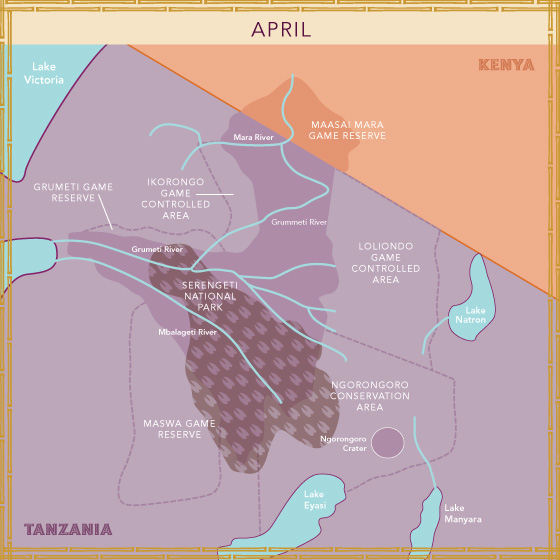
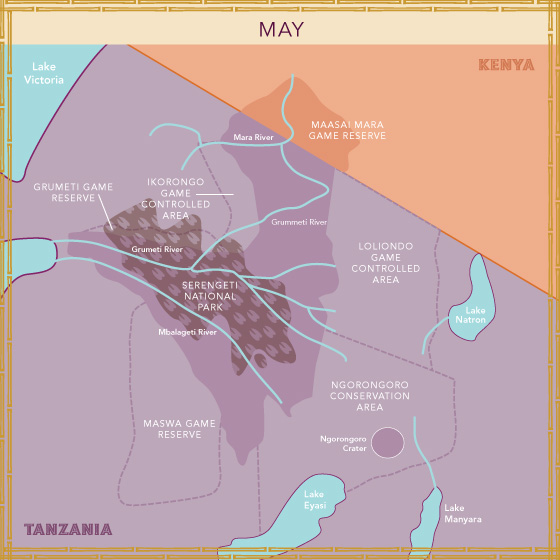
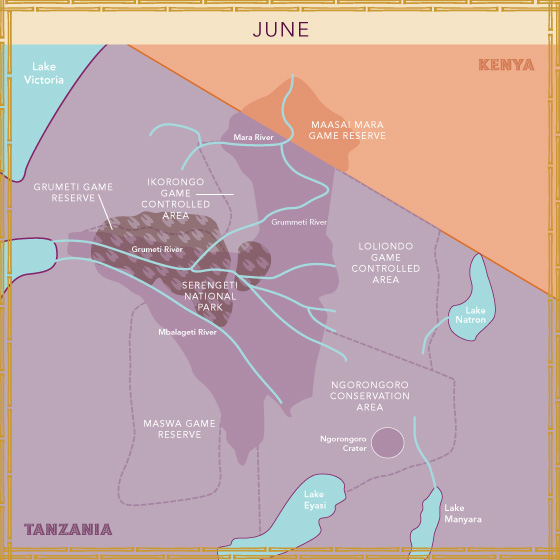
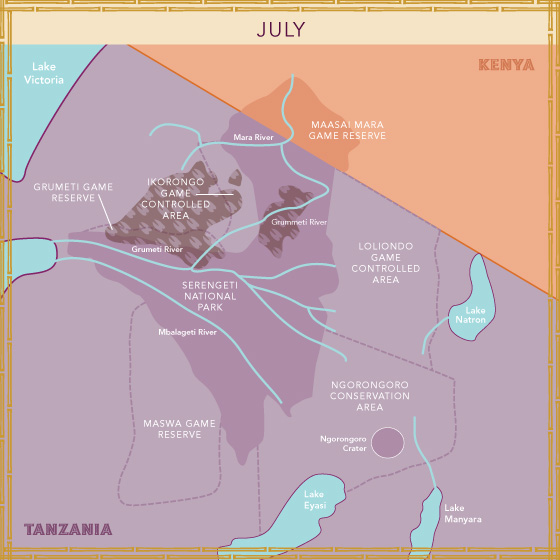
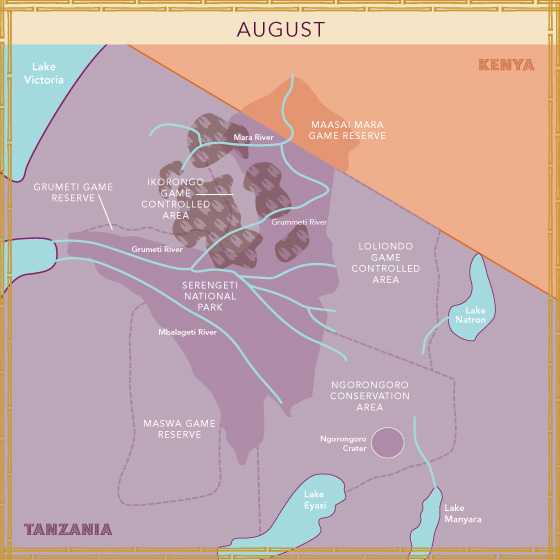
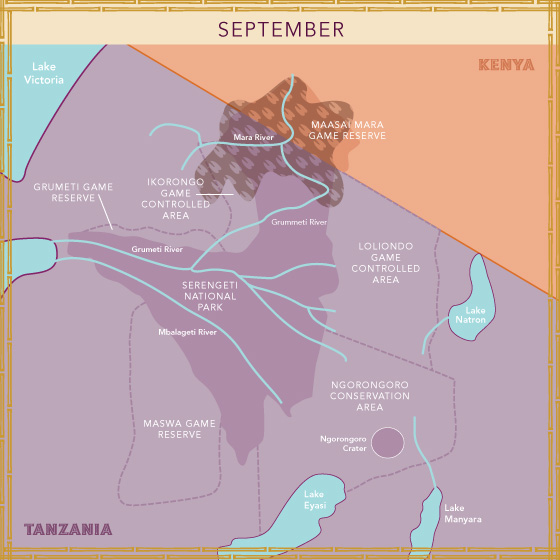
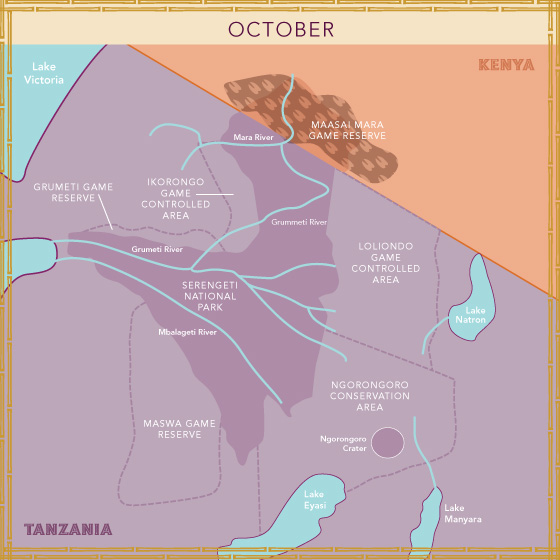
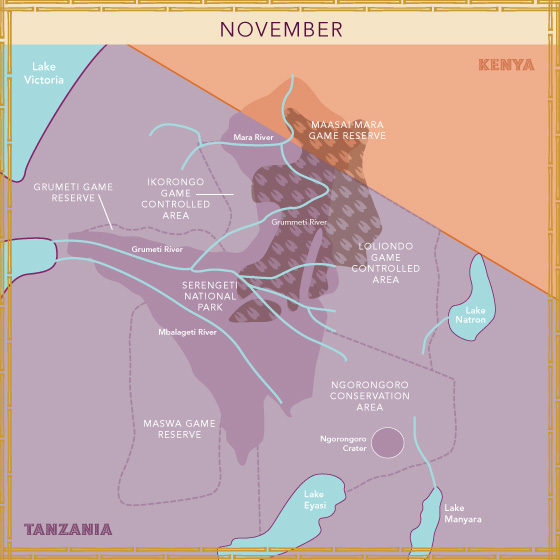
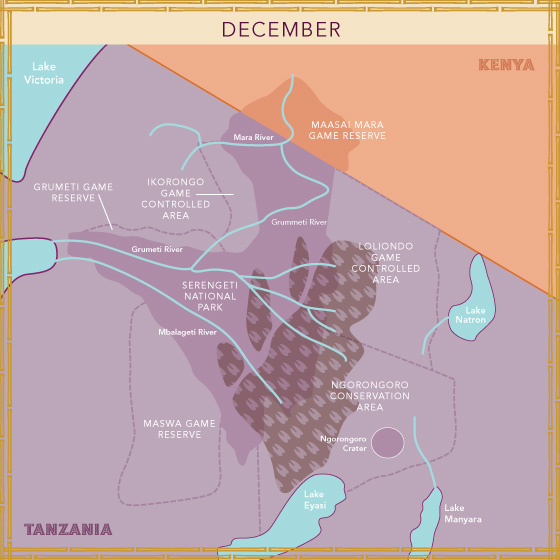
The largest and longest overland migration on earth, the Great Wildebeest Migration is a year-round trek taking two million wildebeest and countless zebras and antelope from the southern Serengeti to the Maasai Mara and back.
Select a month to forecast the wildebeests’ route, then contact us to schedule your Great Wildebeest Migration safari.
Sign up for the Ujuzi Newsletter!
From top travel tips to innovative safaris and conservation movement, get inspired to plan your next African safari!
By submitting this form, you are consenting to receive marketing emails from: . You can revoke your consent to receive emails at any time by using the SafeUnsubscribe® link, found at the bottom of every email. Emails are serviced by Constant Contact


